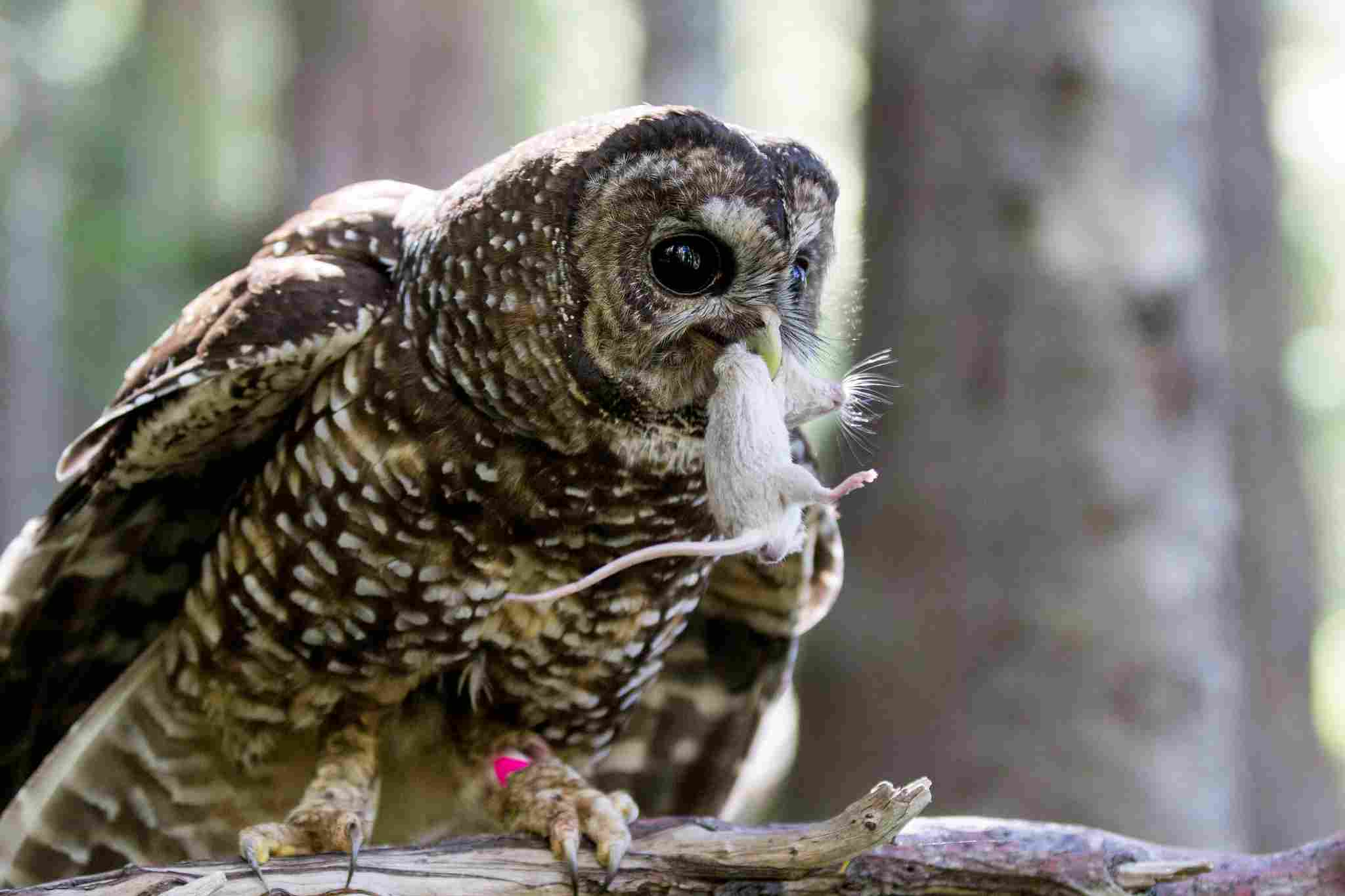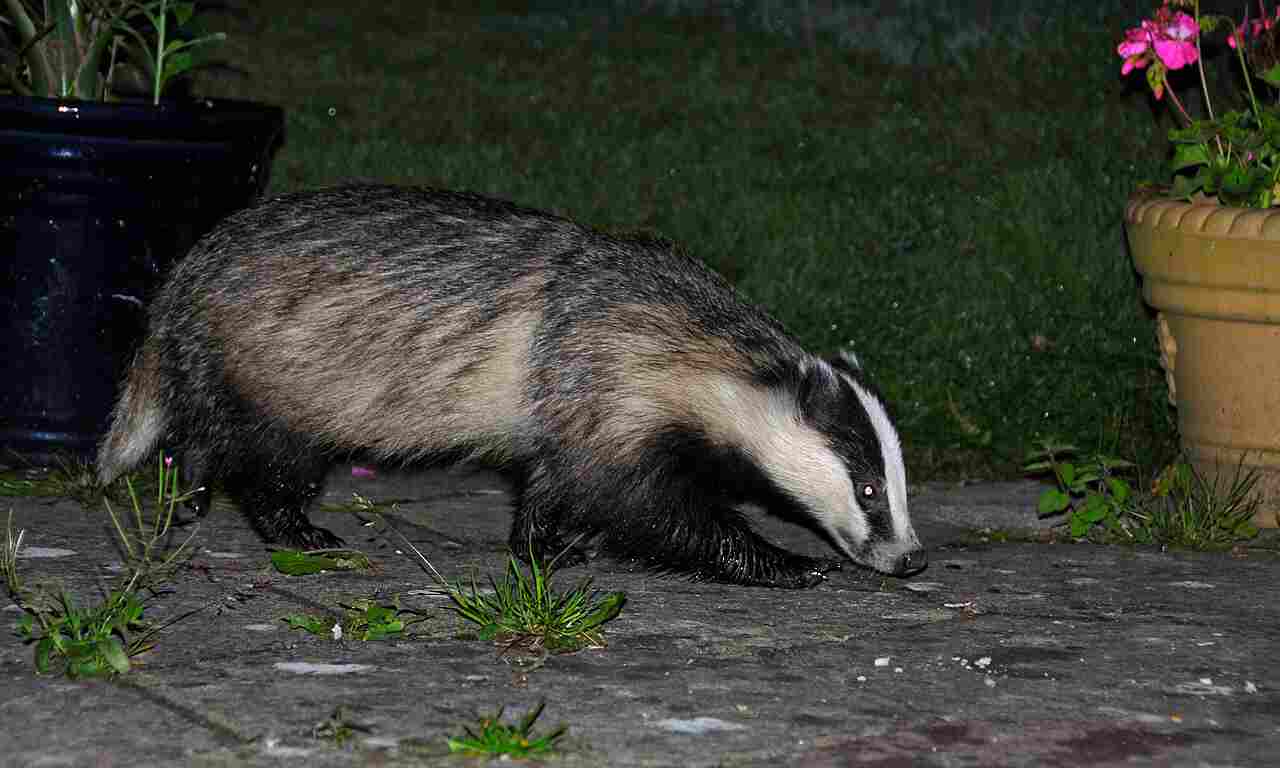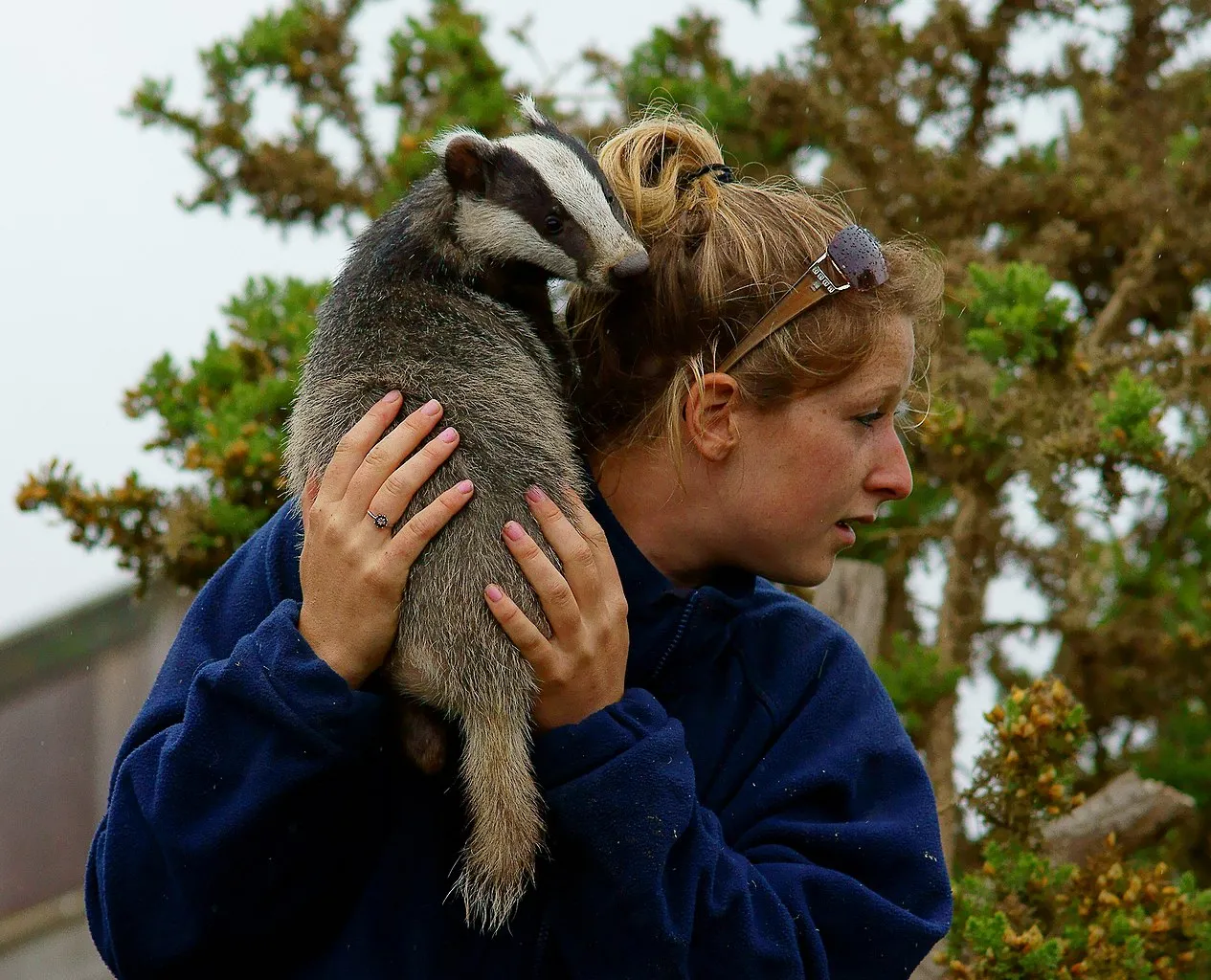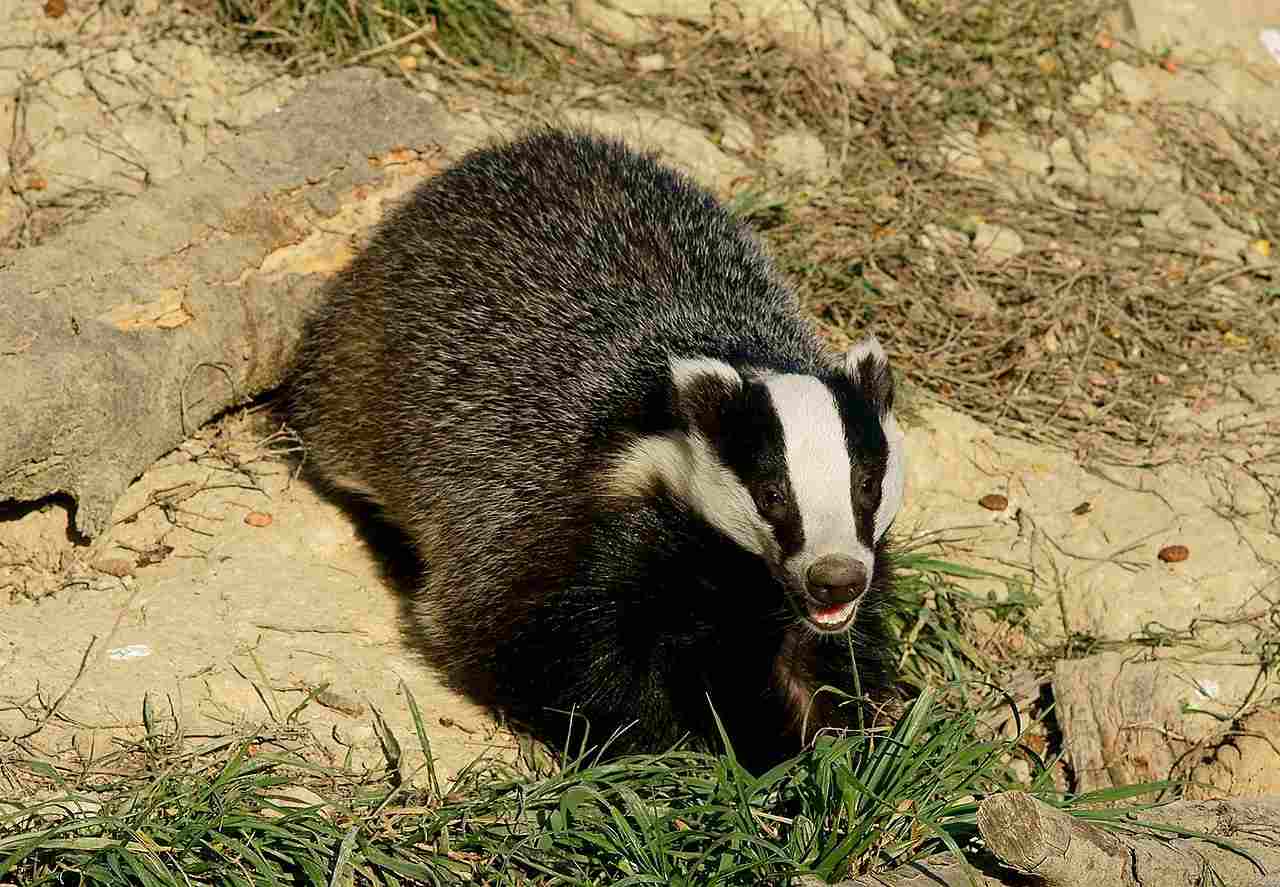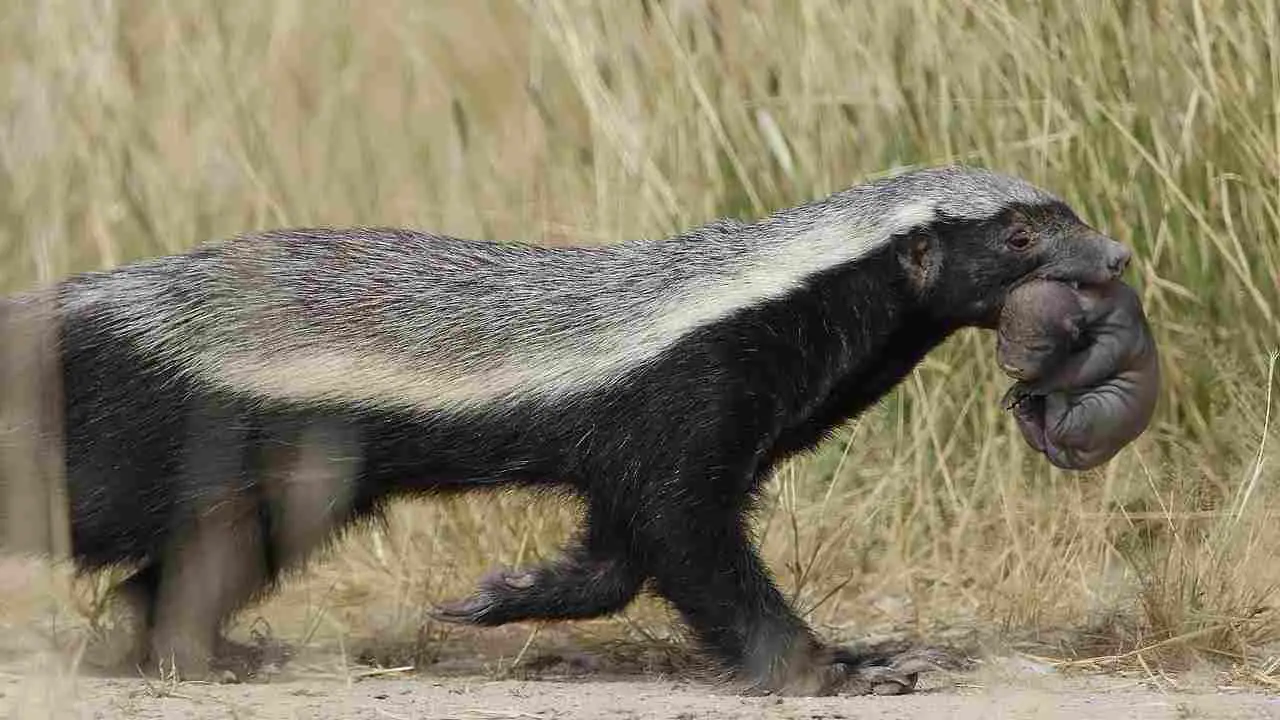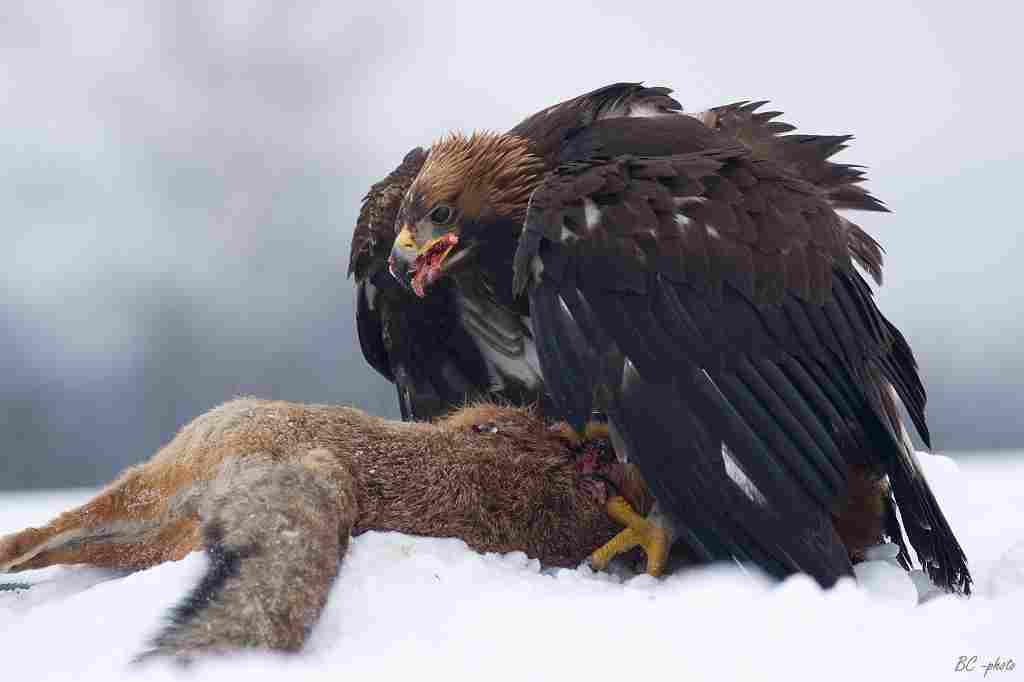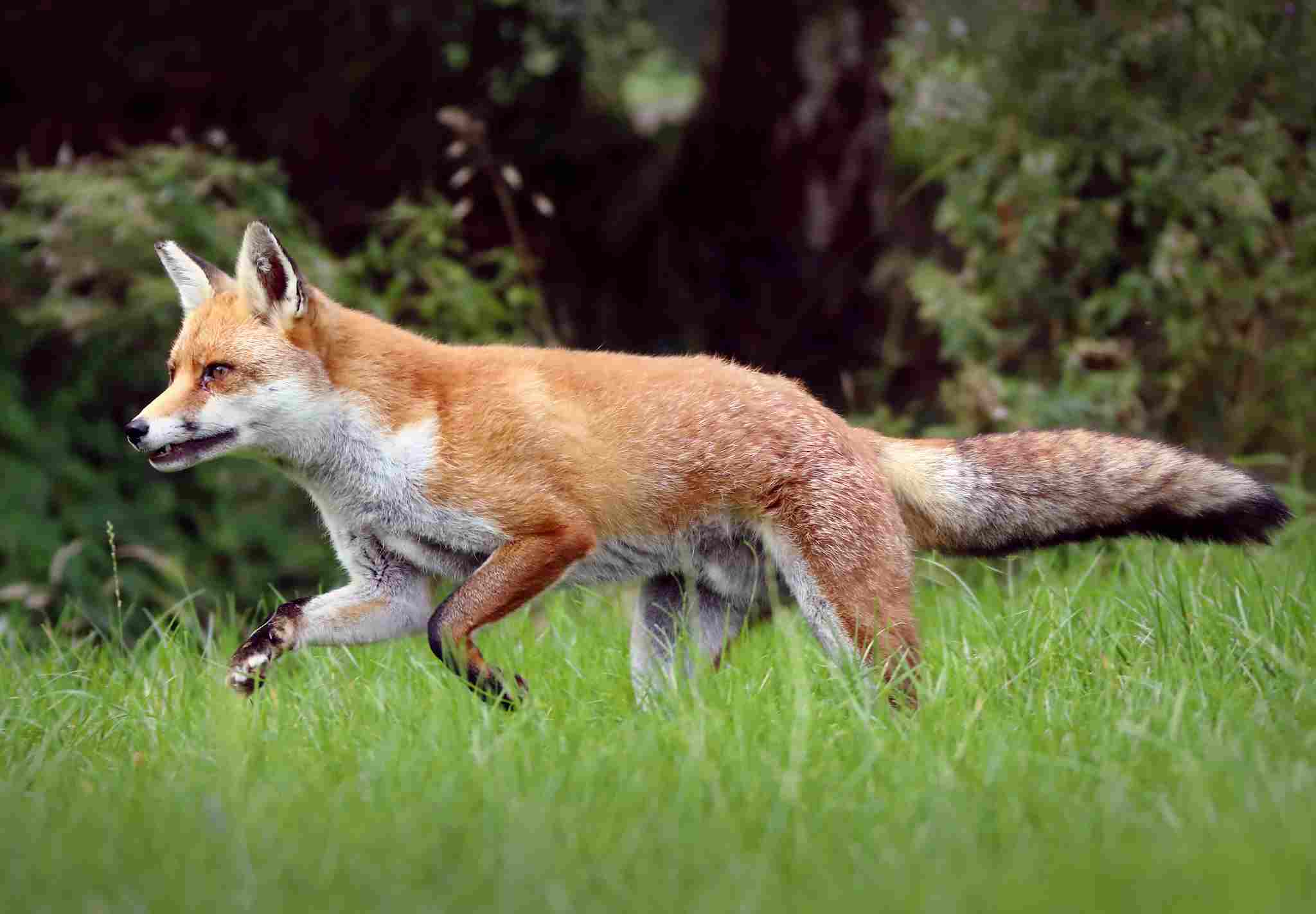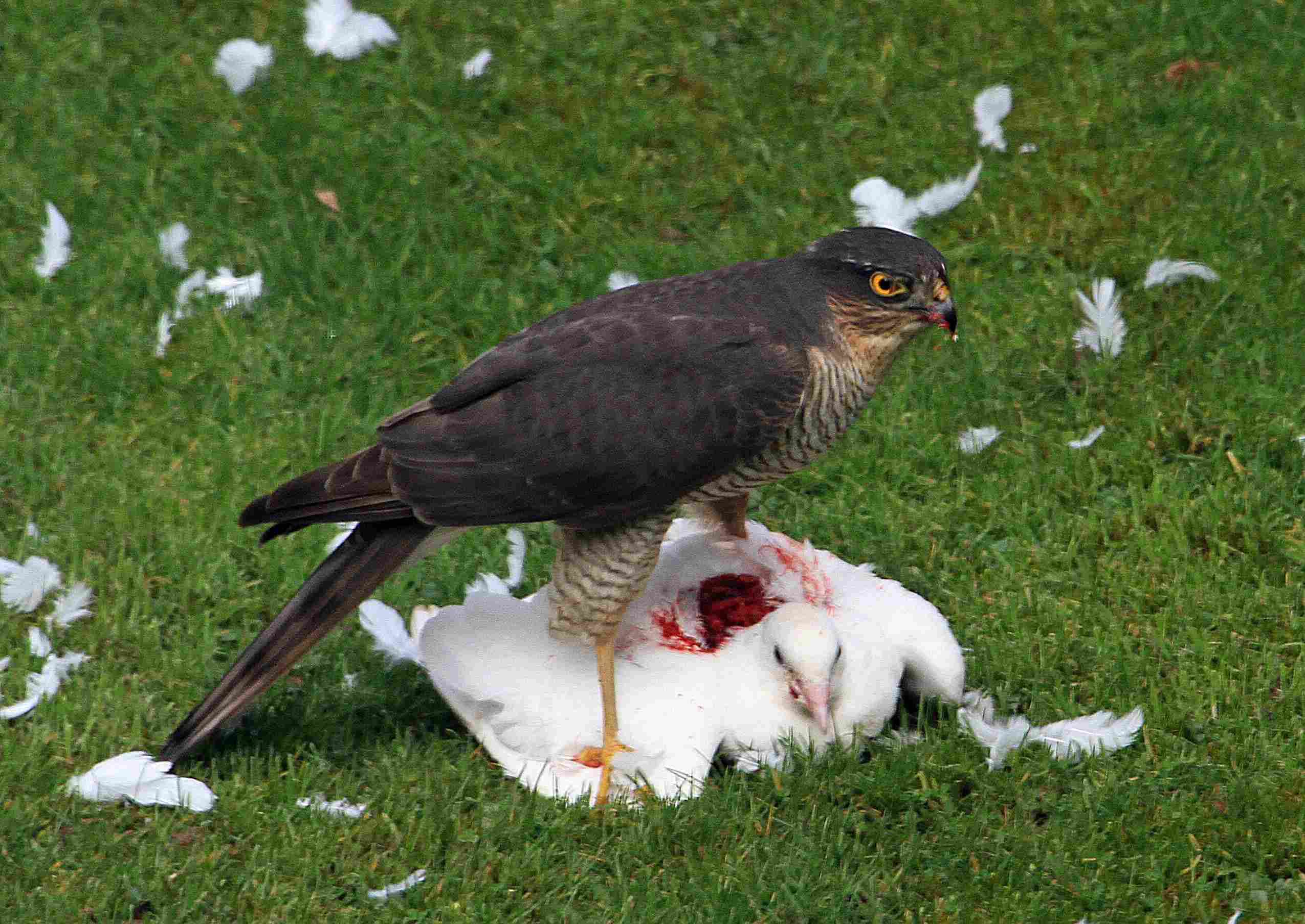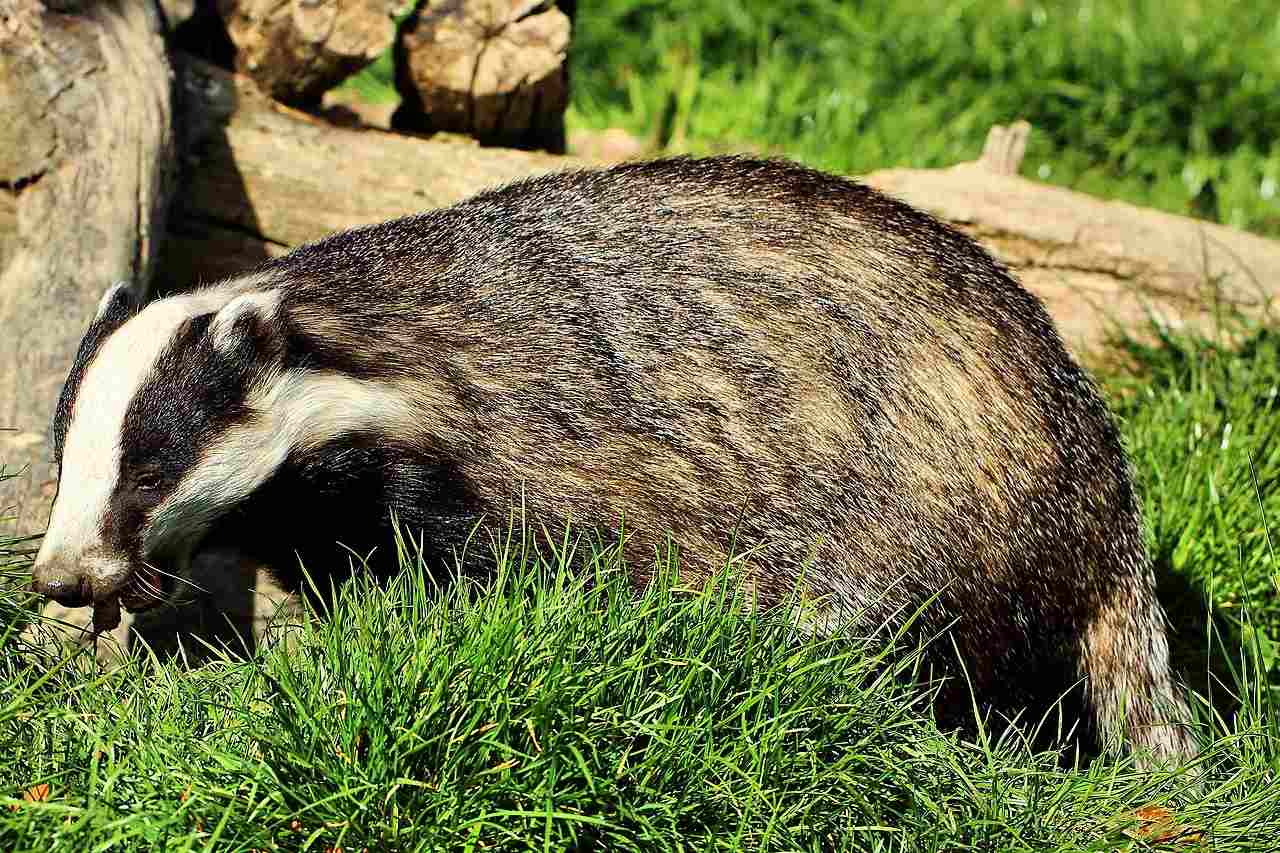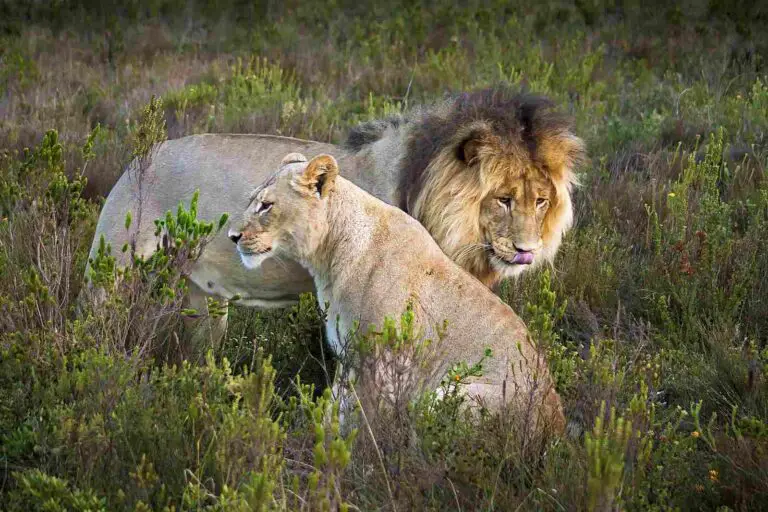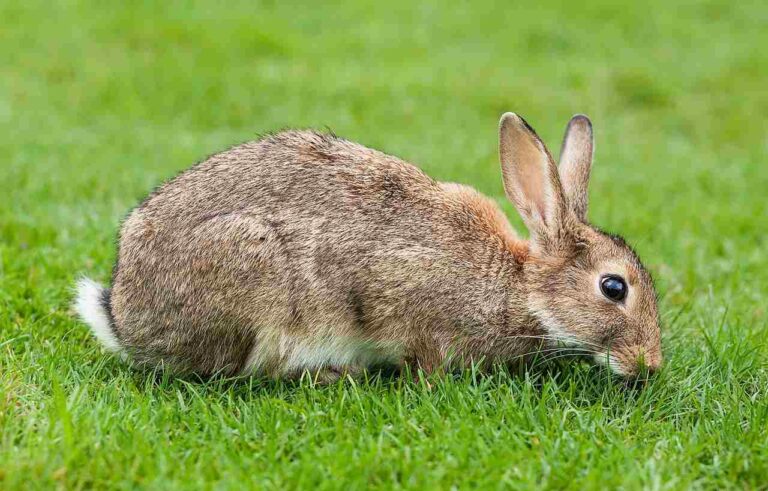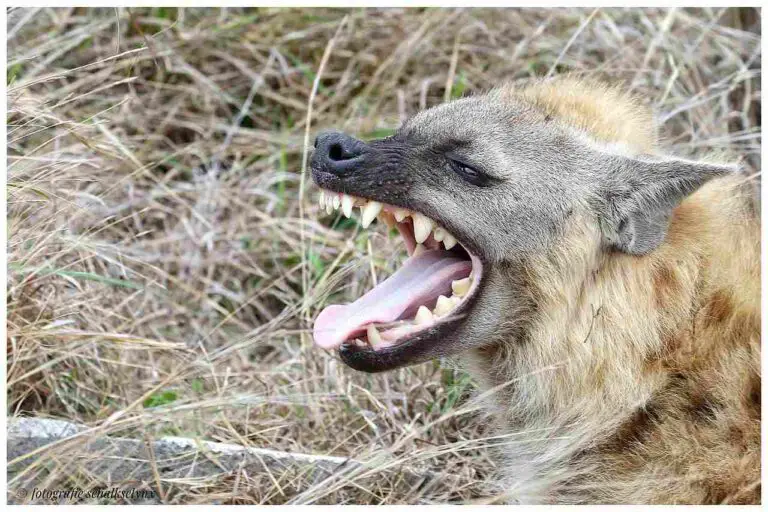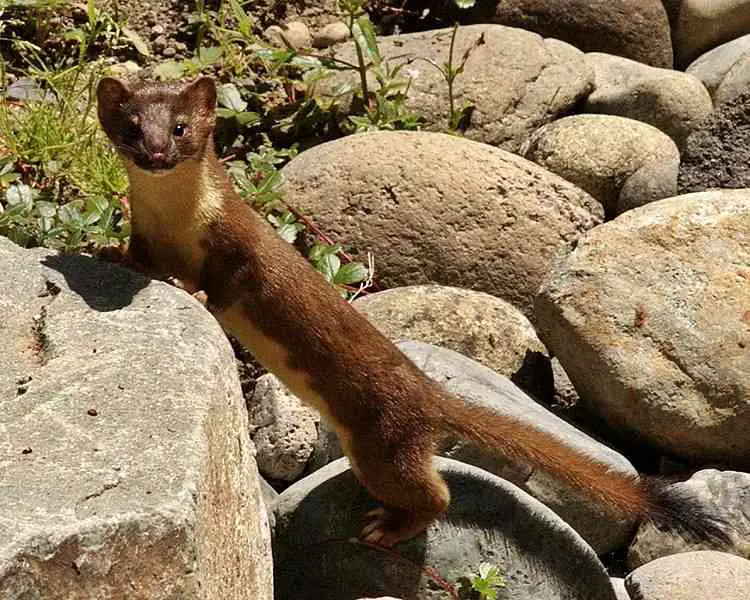9+ Predators In England And Their Characteristics
Examples of predators in England are foxes, badgers, hawks, and owls, among others. These predators vary widely in their habitats, diets, and behaviors. Foxes are known for their adaptability, while badgers are nocturnal and social. Hawks are agile birds of prey, and owls are nocturnal hunters with acute hearing. Each predator plays a unique role in maintaining the ecological balance of England’s diverse environments.
1. Badger
Badgers are one of the most distinctive and iconic predators in England. Recognizable by their stocky bodies, short legs, and distinctive black and white striped faces, these mammals are primarily nocturnal and spend much of their time underground in extensive burrow systems known as setts. They are omnivores, with a diet that includes earthworms, small mammals, birds, eggs, insects, and a variety of plant material. Badgers are highly social, living in groups called clans, and they are known for their strong familial bonds and complex social structures.
In the English countryside, badgers play a significant ecological role, aiding in soil aeration through their digging activities and acting as a key species in the control of certain pest populations. Despite their importance, badgers face several threats, including habitat loss and road traffic accidents. Additionally, in some regions, they have been controversially culled due to their role in spreading bovine tuberculosis. Conservation efforts aim to balance the needs of agriculture with the importance of maintaining healthy badger populations.
2. Weasel
The weasel is the smallest carnivore found in England, with a sleek, slender body that allows it to hunt effectively in narrow spaces. Despite its diminutive size, the weasel is a formidable predator, capable of taking down prey much larger than itself, such as rabbits. Primarily active during the day, weasels are skilled hunters, relying on their agility and sharp senses to catch a variety of prey, including rodents, birds, and insects. Their keen instincts and quick movements make them highly effective at keeping pest populations in check.
Weasels can be found in a range of habitats across England, from woodlands to farmlands and even urban areas. They are solitary creatures and are known for their adaptability and resilience. However, like other predators, they face threats from habitat loss and human activity. Despite this, the weasel continues to be a vital part of England’s ecosystem, contributing to the natural balance by controlling populations of smaller animals.
3. Fox
Foxes are among the most familiar predators in England, known for their cunning and adaptability. The red fox, the most common species in the UK, has a distinctive orange-red coat, bushy tail, and pointed ears. Foxes are highly versatile, thriving in various environments, from rural countryside to bustling urban areas. Their diet is equally varied, ranging from small mammals and birds to fruits, vegetables, and even human scraps in urban settings.
Foxes are largely nocturnal, though they can be seen during the day, especially in urban areas where they have grown accustomed to human activity. They are solitary by nature but can form family groups during the breeding season. Despite their adaptability, foxes face challenges such as habitat loss and hunting. Nonetheless, they continue to play a crucial role in England’s ecosystems, serving as opportunistic predators that help control populations of smaller animals.
4. Stoat
Stoats, also known as ermine when in their white winter coats, are agile and fierce predators native to England. They resemble weasels but are larger, with a distinctive black-tipped tail. Stoats are highly active and are known for their energetic hunting style, often chasing prey through fields and hedgerows with remarkable speed and agility. Their diet consists mainly of small mammals like rabbits and voles, but they also hunt birds and their eggs when the opportunity arises.
Stoats are widespread across England, occupying a range of habitats, including forests, grasslands, and agricultural areas. They are crucial in controlling rodent populations, which makes them valuable for maintaining ecological balance. However, stoats can also pose a threat to native bird species, especially on islands where ground-nesting birds are vulnerable. Conservation efforts often focus on managing stoat populations to protect sensitive bird species while recognizing the stoat’s role in the broader ecosystem.
5. Wildcat
The wildcat is a rare and elusive predator in England, known for its resemblance to a domestic tabby cat but with a more robust build and a wilder temperament. Wildcats are typically found in remote areas, such as forests and moorlands, where they prey on small mammals, birds, and reptiles. They are solitary and territorial creatures, preferring to avoid human contact and remaining hidden in dense vegetation during the day.
Wildcats are critically endangered in England, with their primary threats being habitat loss, hybridization with domestic cats, and persecution by humans. Conservation efforts are underway to protect and restore wildcat populations, focusing on preserving their natural habitats and reducing the risks of hybridization. The survival of the wildcat is seen as crucial for maintaining biodiversity and ecological balance in England’s landscapes.
6. Hawk
Hawks are powerful birds of prey found throughout England, known for their keen eyesight, sharp talons, and swift flight. Among the most common species in England are the Eurasian sparrowhawk and the common buzzard. These raptors are skilled hunters, capable of capturing a wide variety of prey, including small mammals, birds, and reptiles. Hawks often hunt from elevated perches, using their excellent vision to spot and swoop down on unsuspecting prey.
Hawks inhabit a variety of environments, from forests and moorlands to agricultural fields and urban areas. Their presence is an indicator of a healthy ecosystem, as they help control populations of smaller animals and birds. Despite their resilience, hawks face challenges from habitat loss, illegal hunting, and collisions with vehicles or power lines. Conservation efforts aim to protect hawk habitats and ensure these majestic predators continue to soar over England’s landscapes.
7. Owl
Owls are nocturnal birds of prey that are prevalent across England, known for their silent flight and haunting calls. The most well-known species in England include the tawny owl, barn owl, and little owl, each with unique characteristics and preferred habitats. Owls have remarkable adaptations, such as their acute hearing, which helps them locate prey in the dark, and their large eyes that provide excellent night vision. They primarily hunt small mammals like mice and voles, but some species also prey on birds and insects.
Owls play a significant role in the ecosystem by controlling rodent populations, thereby contributing to agricultural health and biodiversity. They are found in a range of habitats, including forests, farmlands, and even urban areas where they may nest in old buildings or church towers. However, owls face threats from habitat loss, road traffic, and the use of pesticides, which can impact their prey populations. Conservation efforts focus on protecting their habitats and providing nesting sites to ensure these majestic birds continue to thrive in England.
8. Fox
Foxes, specifically the red fox, are among the most adaptable and widespread predators in England. They are known for their cunning nature, keen senses, and striking reddish fur. Foxes thrive in a variety of environments, from rural areas to cities, showcasing their ability to adapt to human presence. They are omnivorous, feeding on small mammals, birds, insects, fruits, and even discarded human food, which allows them to survive in diverse habitats.
Foxes have a mixed reputation; while some see them as charming symbols of the countryside, others view them as pests due to their scavenging habits and occasional predation on livestock. Despite these conflicting views, foxes play a vital role in controlling populations of smaller mammals, contributing to ecological balance. Conservation efforts aim to mitigate human-wildlife conflicts while preserving fox populations, recognizing their importance in England’s natural landscapes.
9. Adder
The adder, also known as the common European viper, is the only venomous snake native to England. It has a distinctive zig-zag pattern on its back and can vary in color from gray to brown to reddish. Despite being venomous, adders are generally non-aggressive and will avoid human contact when possible. They inhabit a variety of habitats, including heathlands, grasslands, and forests, where they primarily feed on small mammals, birds, and amphibians.
Adders are a crucial part of England’s ecosystems, controlling populations of small animals and serving as prey for larger predators like birds of prey and mammals. However, they face significant threats, including habitat loss, persecution, and road traffic. Conservation efforts aim to protect and restore their natural habitats and reduce human-wildlife conflicts. Despite their venomous nature, adders are an important species for maintaining ecological balance in England.
10. Grass Snake
Grass snakes are non-venomous snakes found throughout England, recognized by their greenish coloration and distinctive yellow or white collar. They are often found near water sources such as ponds, rivers, and wetlands, where they hunt amphibians, fish, and small mammals. Grass snakes are excellent swimmers and can move swiftly on land, using their agility to escape predators and capture prey.
Despite their non-venomous nature, grass snakes often face threats from human activity, including habitat loss and road traffic. They are also at risk from garden tools and pets, as they frequently inhabit gardens and other semi-urban areas. Conservation efforts focus on protecting their habitats, particularly wetlands, and raising awareness about their ecological importance. Grass snakes play a crucial role in controlling populations of amphibians and fish, contributing to the health of England’s ecosystems.
11. Smooth Snake
The smooth snake is one of the rarest snakes in England and is classified as endangered due to its limited distribution and specialized habitat requirements. It is a small, secretive species with a smooth, glossy appearance, often gray or brown in color with darker patterns along its body. Smooth snakes are typically found in heathland environments, where they prey on small mammals, lizards, and insects. They are non-venomous and rely on constriction to subdue their prey.
Due to their specialized habitat needs, smooth snakes are particularly vulnerable to habitat loss and degradation. The decline of heathlands across England has had a significant impact on their populations. Conservation efforts are focused on protecting and restoring heathland habitats, as well as monitoring and researching smooth snake populations to understand their behavior and distribution better. Despite their elusive nature, smooth snakes play an essential role in the biodiversity of England’s heathlands, contributing to the complex web of life in these unique ecosystems.
*Summary
-
Badger
-
Stocky bodies, short legs, and black-and-white striped faces.
-
Primarily nocturnal, living in underground setts.
-
Omnivores: eat earthworms, small mammals, birds, insects, and plants.
-
Highly social, living in clans.
-
-
Weasel
-
Smallest carnivore in England, with a slender body.
-
Hunts small mammals, birds, and insects.
-
Primarily diurnal, active during the day.
-
Solitary, adaptable to various habitats.
-
-
Fox
-
Known for cunning and adaptability; distinctive reddish fur.
-
Omnivorous, feeding on small mammals, birds, insects, and human scraps.
-
Nocturnal but visible in urban and rural areas.
-
Solitary but can form family groups during breeding season.
-
-
Stoat
-
Larger than weasels, with a distinctive black-tipped tail.
-
Hunts small mammals like rabbits, birds, and their eggs.
-
Active and agile hunters.
-
Found in forests, grasslands, and agricultural areas.
-
-
Wildcat
-
Resembles a domestic tabby cat but wilder; critically endangered.
-
Found in remote areas like forests and moorlands.
-
Feeds on small mammals, birds, and reptiles.
-
Faces threats from habitat loss, hybridization with domestic cats, and persecution.
-
-
Hawk
-
Birds of prey with keen eyesight and swift flight.
-
Hunts small mammals, birds, and reptiles.
-
Found in various habitats, from forests to urban areas.
-
Faces threats from habitat loss and illegal hunting.
-
-
Owl
-
Nocturnal birds of prey; includes tawny owl, barn owl, and little owl.
-
Hunts small mammals, birds, and insects.
-
Found in forests, farmlands, and urban areas.
-
Faces threats from habitat loss, road traffic, and pesticides.
-
-
Adder
-
The only venomous snake in England, with a zig-zag pattern.
-
Found in heathlands, grasslands, and forests.
-
Preys on small mammals, birds, and amphibians.
-
Generally avoids human contact; faces threats from habitat loss and persecution.
-
-
Grass Snake
-
Non-venomous snake with a greenish coloration and yellow/white collar.
-
Found near water sources; feeds on amphibians, fish, and small mammals.
-
Faces threats from human activity, garden tools, and pets.
-
Plays a role in controlling populations of amphibians and fish.
-
-
Smooth Snake
-
Endangered, with a smooth, glossy appearance.
-
Found in heathlands; preys on small mammals, lizards, and insects.
-
Non-venomous; relies on constriction.
-
Vulnerable to habitat loss and degradation.
-
| Predator | Characteristics |
| Badger |
Nocturnal, omnivorous, lives in setts, highly social.
|
| Weasel |
Smallest carnivore, diurnal, hunts small mammals.
|
| Fox |
Cunning, omnivorous, nocturnal, adaptable.
|
| Stoat |
Larger than weasel, black-tipped tail, hunts rabbits.
|
| Wildcat |
Resembles domestic cat, critically endangered.
|
| Hawk |
Birds of prey, keen eyesight, swift flight.
|
| Owl |
Nocturnal, hunts small mammals and birds.
|
| Adder |
Only venomous snake, avoids human contact.
|
| Grass Snake |
Non-venomous, greenish with yellow collar.
|
| Smooth Snake |
Endangered, smooth and glossy, constrictor.
|

